Both types taste good and are good for you
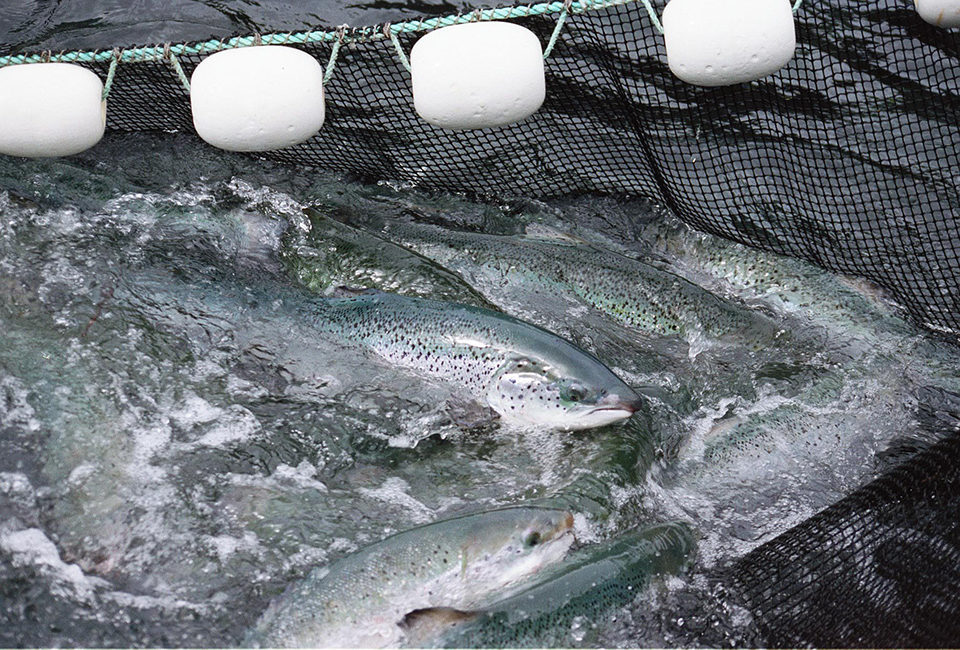
Salmon is the second most-popular fish consumed in the United States. It tastes savory and earthy, yet slightly sweet, and is among the richest sources of long-chain omega-3 fats. It is also full of high-quality protein, vitamins and minerals.
Research shows that eating fish like salmon promotes healthy hearts and brain development. All types of commercial salmon are healthful to eat. The most readily available kinds in the U.S. are wild Pacific and farmed Atlantic salmon. Farmed and wild salmon are very similar in many ways.
Salmon FAQs
How do farmed and wild salmon differ?
Farmed and wild salmon are usually different species of fish. Most farmed salmon are Atlantic salmon, Salmo salar. Wild populations of Atlantic salmon are generally at very low levels, and their commercial harvest is limited. Farm-raised fish are hatched, raised and harvested under controlled conditions comparable to other farmed animals. Farmed Atlantic salmon are available year-round in fresh or frozen forms.
Most wild-caught salmon are one of five species of Pacific salmon. They are harvested by fishing with a variety of gear types, mostly in the north Pacific from June through September. Fresh wild Pacific salmon are available during this time. The rest of the year, frozen or canned wild salmon are available.
How are farmed and wild salmon similar?
Farmed and wild salmon have very similar nutrients. Atlantic salmon and Pacific salmon look similar on the outside. But between species and even within the same species, each type of salmon can have different flavors, textures and flesh color. How the fish is processed and handled can also dramatically influence these characteristics.
In taste tests between farmed and wild salmon, sometimes farmed salmon is preferred. Sometimes taste panels prefer wild fish. However, these taste tests often compare farmed and wild salmon of different species and are not really designed to tell the differences between the tastes of the farmed and wild versions of the same type of salmon.
Often, wild salmon is priced higher than farmed salmon. Especially when buying fish fillets, it can be hard to tell the difference between how farmed and wild salmon look. It may take DNA analysis to confirm the identity of the species. Species substitutions sometimes occur, either accidentally or through business practices that mislead consumers. Consumers should buy salmon from trustworthy retailers and restaurants with good reputations.
What do salmon eat?
For survival and growth, both farmed and wild salmon need a well-balanced diet of protein, carbohydrates, fats, vitamins, minerals and pigments. In the wild, salmon eat zooplankton and fish. About 4.50 kg of prey is needed to make 0.45 kg of wild salmon. This means wild salmon have a feed-conversion ratio (FCR) around 10:1.
Farmed salmon need the same well-balanced diet to live and grow. They are fed a combination of fishmeal, fish oil and other land-based protein sources. The FCR is around 1:1. However, it should be noted that the water content in live prey items is much higher than in feed.
Some nutrients in prey and feed are considered essential because fish are unable to make them, so they must come from the diet. One such nutrient is the orange pigment astaxanthin, which is in the same family of nutrients as vitamin A. It is a powerful antioxidant that is thought to be involved in the ovarian development, hatching, survival, growth and respiration of salmon. Astaxanthin is also what causes the reddish-orange color of salmon flesh.
The color of wild and farmed salmon can vary widely from red to orange-red, rose, pink and even white. The color depends mostly on the amount of astaxanthin in the diet. Wild salmon get natural astaxanthin from the prey they eat. Farmed salmon get natural or added astaxanthin from the feed they eat.
How does eating farmed and wild salmon make people healthier?
Both farmed and wild salmon are healthful choices that are low in total fat and high in protein (Table 1). Both are rich in vitamins, minerals and omega-3s. In recent years, research has linked eating seafood to many health benefits throughout life.
Tom, USDA nutrition information for 100 g of farmed and wild salmon, Table 1
| Calories | Protein (g) | Fat (g) | Saturated Fat (g) | Sodium (mg) | Cholesterol (mg) | Omega 3 (g)* |
|---|
Calories | Protein (g) | Fat (g) | Saturated Fat (g) | Sodium (mg) | Cholesterol (mg) | Omega 3 (g)* | |
|---|---|---|---|---|---|---|---|
| Farmed | |||||||
| Atlantic | 206 | 22.1 | 12.3 | 2.5 | 61 | 63 | 2.1 |
| Coho | 178 | 24.3 | 8.2 | 1.9 | 52 | 63 | 1.2 |
| Wild | |||||||
| Chinook | 231 | 25.7 | 13.3 | 3.2 | 60 | 85 | 1.7 |
| Sockeye | 216 | 27.3 | 10.9 | 1.9 | 66 | 87 | 1.2 |
| Coho | 139 | 23.4 | 4.3 | 1.0 | 58 | 55 | 1.0 |
| Pink | 149 | 25.5 | 4.4 | 0.7 | 86 | 67 | 1.3 |
| Chum | 154 | 25.8 | 4.8 | 1.0 | 64 | 95 | 0.8 |
* Omega-3 values equal the sum of eicosapentaenoic acid and docosahexaenoic acid.
Babies of moms who eat fish during pregnancy have the best possible brain and eye development. Adults who eat fish twice a week have up to 40 percent lower risk of dying from a heart attack. And a seafood-rich diet can help prevent depression and dementia as people age.
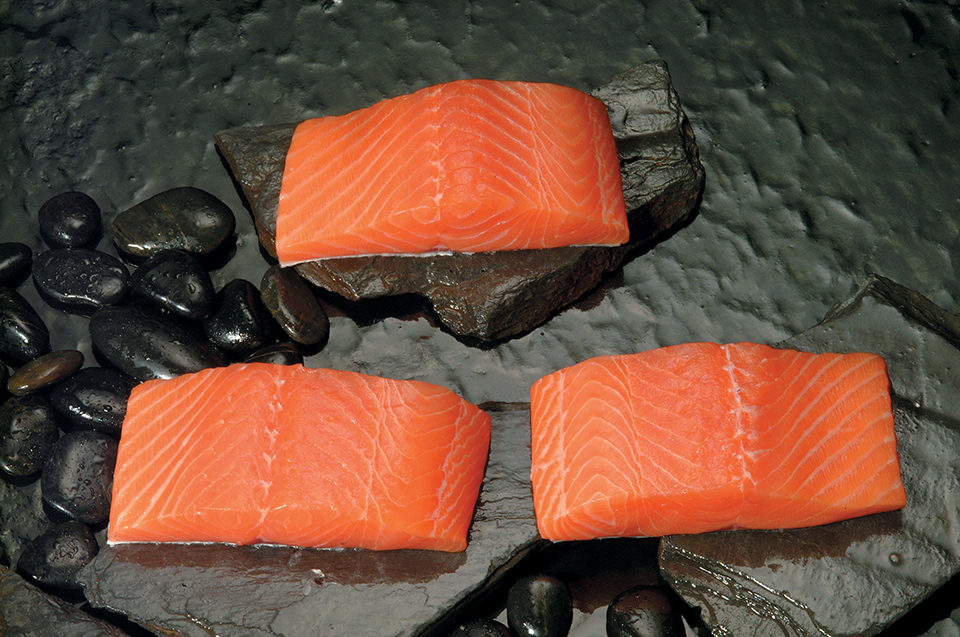
Is salmon safe to eat?
Most foods contain traces of substances other than nutrients. Scientists have compared concerns with eating fish to concerns with limiting or avoiding fish. They found that the biggest risk is limiting or avoiding fish, which results in thousands of extra heart disease deaths per year and less than optimal brain development in children.
- Mercury, PCBs
Methylmercury, an organic form of mercury, and polychlorinated biphyenyls (PCBs) are not a health concern associated with eating farmed or wild salmon.
Minute quantities of mercury are detectable in air, water, soil and all living matter. The Institute of Medicine reported that salmon, whether farmed or wild, is one of the species lowest in mercury levels and highest in omega-3 fatty acids. A 2008 study by Barry Kelly and co-authors found mercury in all salmon samples ranged from 0.03 to 0.10 ppm. This was well below the action level of 1.0 ppm enforced by the U.S. Food and Drug Administration (FDA). Negligible differences in mercury concentrations were observed between the various species of farmed and wild salmon.
Until the late 1970s, PCBs were manufactured globally and used in many electronic products. Health concerns about PCBs led to a ban on their use, and since then, the levels of PCBs in food products and the environment have declined significantly.
Currently, over 90 percent of PCBs that remain in Americans’ foods comes from sources other than seafood. PCB levels in farmed and wild salmon are low and generally range from 5 to 60 ppb. This is less than 3.1 percent of the FDA tolerance level of 2,000 ppb.
- Antibiotics
In the U.S., the FDA regulates antibiotics, which are used to treat ill farm-raised animals including fish, swine, cattle and chickens – except in certified organic animal culture. Veterinarians oversee the way antibiotics are used when they are needed.
Farmers must follow U.S. Environmental Protection Agency and FDA regulations that monitor antibiotic use and environmental impacts. These regulations also make sure antibiotics are used for the shortest time possible, so residual traces do not go above the FDA level of concern.
- Hormones
No hormones are used in salmon farming or added to salmon diets. So, hormones are not a concern when eating farmed or wild salmon.
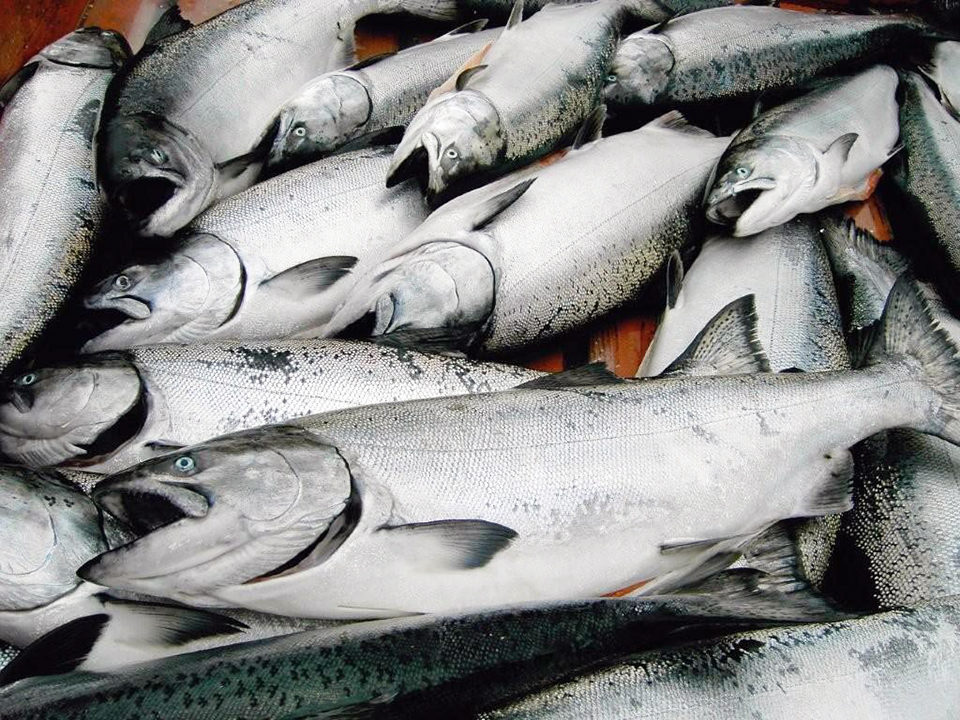
Commercial salmon facts
Atlantic salmon (Salmo salar) are more closely related to brown trout than to the Pacific salmon of the genus Onchorhynchus. Atlantic salmon have been domesticated and selectively bred for many generations. The primary species used in fish farming, they are grown in net pens in nearshore coastal waters and are typically harvested at a weight of 3.6 to 4.5 kg and length of 71 to 76 cm.
Greatly reduced populations of wild Atlantic salmon still spawn in rivers on both sides of the Atlantic. Although historically of great commercial importance, today less than 1 percent of commercially available Atlantic salmon come from the wild.
Chinook salmon (Onchorhynchus tshawytscha), also known as king salmon, live from California, USA, to Japan, with successful new populations in the Great Lakes and New Zealand. Chinook is the largest and least abundant of the Pacific salmon species. Their average weight is about 9 kg, and they range from 76 to 100 cm in length. Small quantities of farmed chinook salmon can be found in the marketplace.
Sockeye salmon (Oncorhynchus nerka) also known as red salmon, are an important commercial species in British Columbia, Canada, and Alaska, USA. Their bright red flesh is prized for canning and for fresh and frozen products. The average size of fish in the market is approximately 2.7 kg and 91 cm in length.
Coho salmon (Oncorhynchus kisutch) also known as silver salmon, range from northern Baja California to Korea. The average weight is 4.5 kg, and they range from 63 to 89 cm in length. Only small quantities of coho salmon are
farmed.
Pink salmon (Onchorhynchus gorbuscha) are also known as humpback salmon because of the large hump males develop during spawning season. Pinks are the smallest but most abundant Pacific salmon, generally weighing 0.9 to 1.4 kg at a length of 76 cm. They live from Puget Sound to Russia. Most pinks are canned and tend to cost less than other types of salmon.
Chum salmon, Onchorhyncus keta, are also known as silver-bright, keta or dog salmon. The average weight is 3.6 kg, and they can grow to 68 cm long. They are relatively easy to farm, and large hatchery programs in Japan and southeast Alaska complement wild populations. Chum are harvested commercially in large numbers when they return to their release sites. Like the pink salmon, chums tend to cost less than other types of salmon. They are sold canned, smoked, fresh and frozen.
(Editor’s Note: This article was originally published in the May/June 2010 print edition of the Global Aquaculture Advocate.)
Now that you've reached the end of the article ...
… please consider supporting GSA’s mission to advance responsible seafood practices through education, advocacy and third-party assurances. The Advocate aims to document the evolution of responsible seafood practices and share the expansive knowledge of our vast network of contributors.
By becoming a Global Seafood Alliance member, you’re ensuring that all of the pre-competitive work we do through member benefits, resources and events can continue. Individual membership costs just $50 a year.
Not a GSA member? Join us.
Authors
-
Pamela D. Tom
University of California – Davis
Sea Grant Extension Program
Food Science and Technology Department
1 Shields Avenue
Davis, California 95616 USA -
Paul G. Olin
University of California
Cooperative Extension
Sea Grant Extension Program
Santa Rosa, California, USA 95403
Tagged With
Related Posts
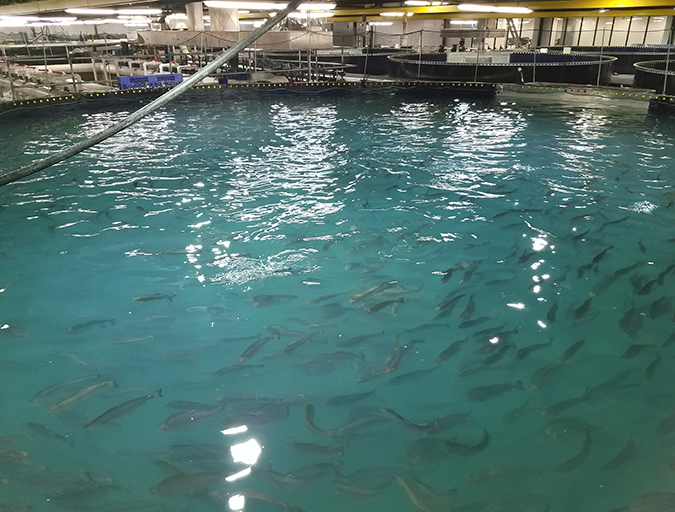
Intelligence
A land grab for salmon (and shrimp) in upstate New York
The operators of Hudson Valley Fish Farm see their inland locale as a pilot to prove that land-based fish farming, located in close proximity to major metropolitan markets, can be successful.
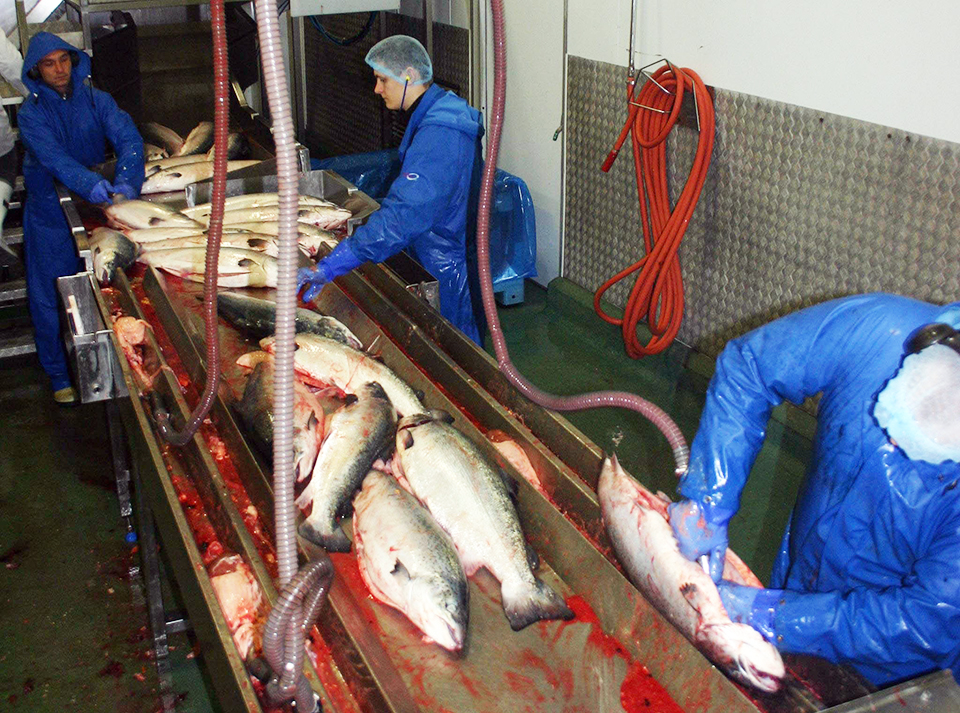
Responsibility
Aquaculture byproducts improve sustainability of seafood value chains
Tons of aquaculture byproducts are available as sources for fishmeal and fish oil to supplement the supplies obtained from fisheries. Innovative technologies are supporting more efficient use of these by-products in aquafeed.
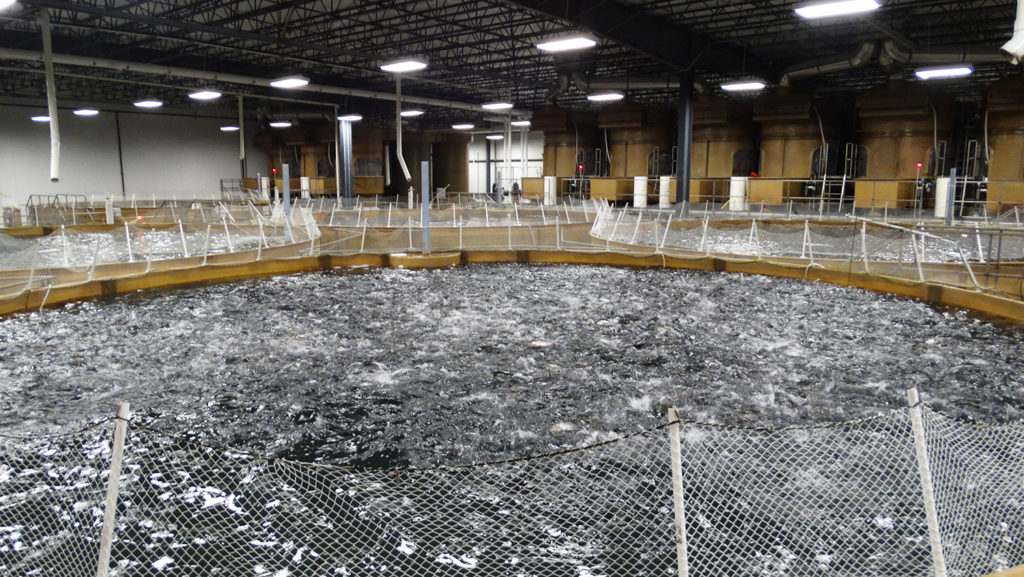
Innovation & Investment
AquaBounty, with new RAS facility, hopes to win public support for GM salmon
Ron Stotish, CEO of AquaBounty Technologies, believes genetically modified salmon is no threat to its opponents and the outlook for AquAdvantage is good. With its purchase of the Bell Fish Co. RAS facility, commercialization will soon commence.
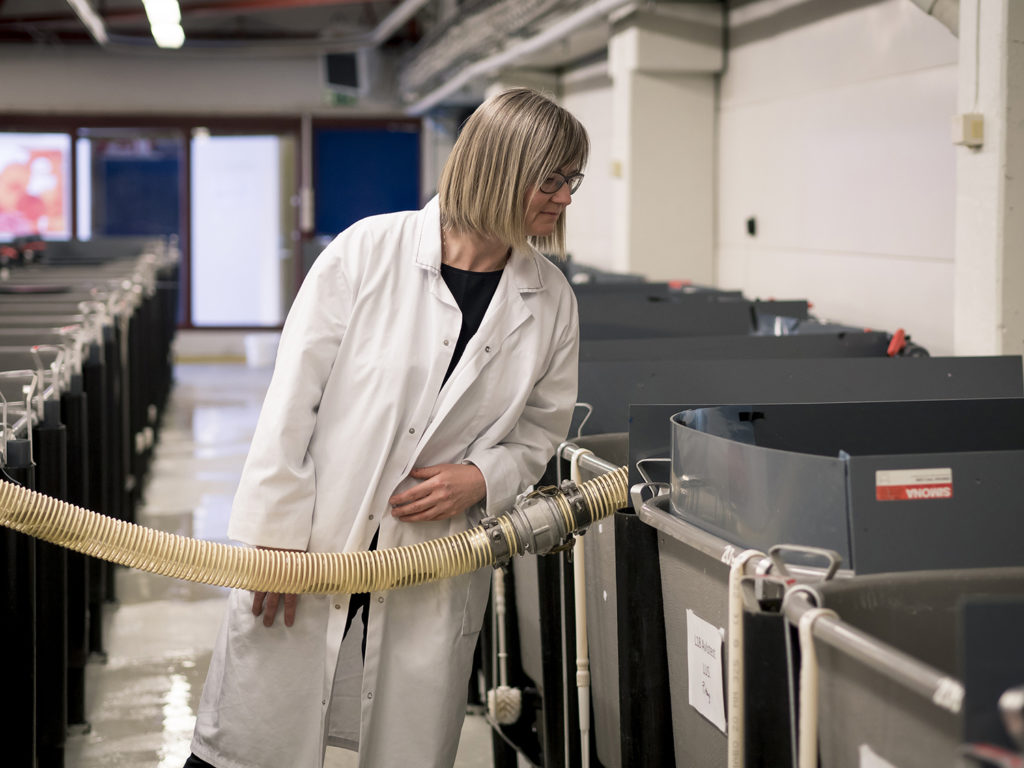
Innovation & Investment
AquaGen CEO: Genomics are transforming aquaculture
The CEO of AquaGen knew that the Norwegian research group’s work in genomics was key to the salmon industry’s future. And that was before she even worked there.



